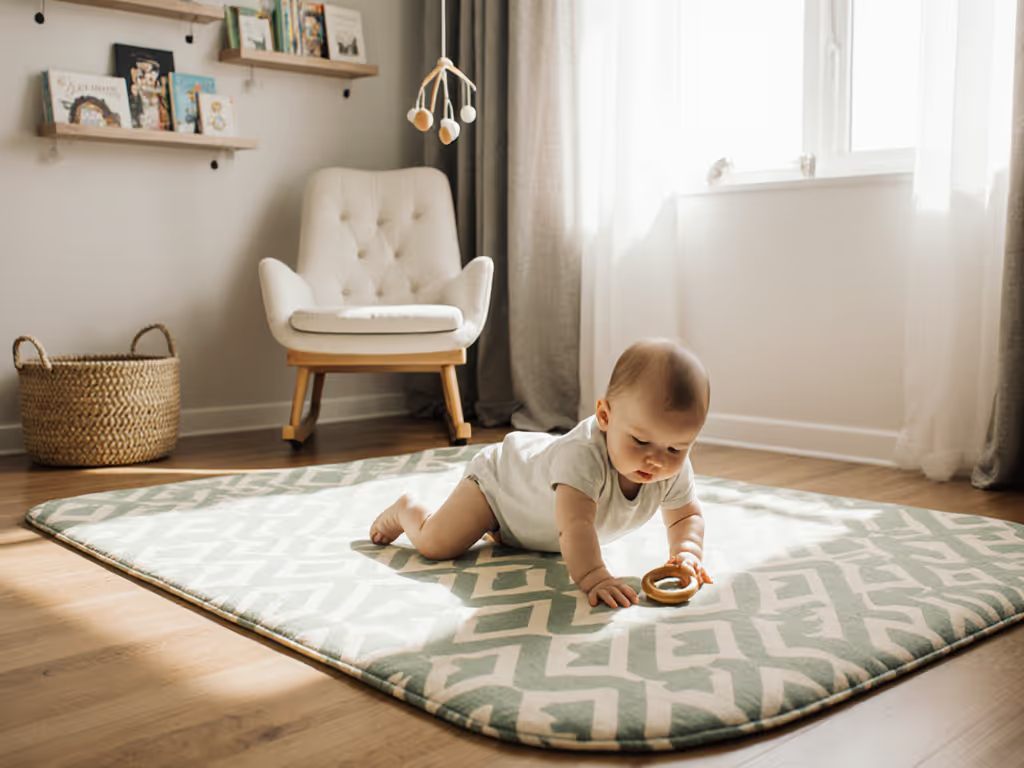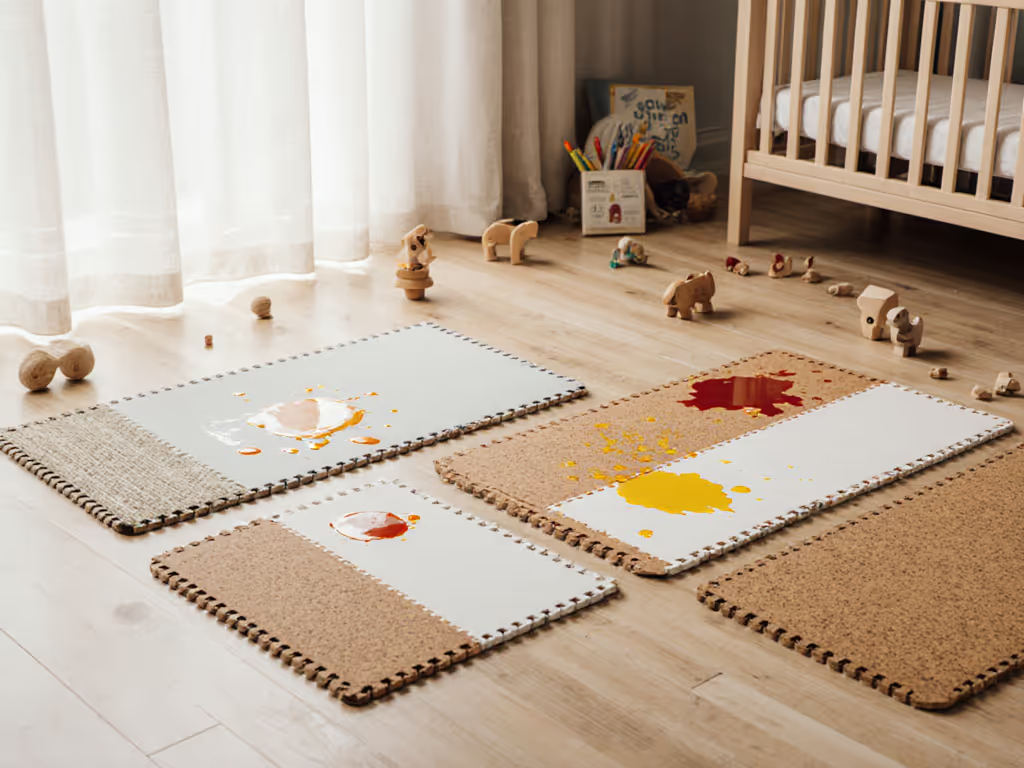
Toddlekind Play Mat Comparison: Classic vs Haven Mats
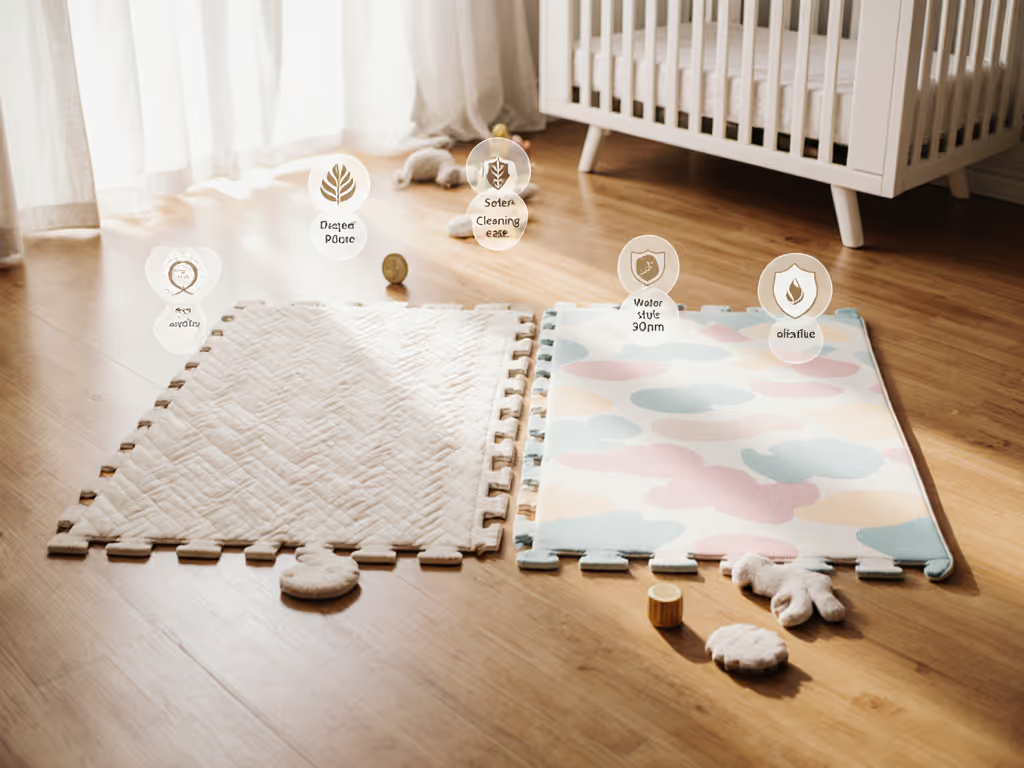
When you're knee-deep in options for a foam mat that won't ruin your carefully curated living room aesthetic, doing a thorough Toddlekind play mat comparison becomes essential. As someone who once endured days of "new mat" smell (which I later learned meant volatile organic compounds), I've made it my mission to help parents cut through marketing fluff and focus on testable facts. Let's examine these two popular options with the critical eye they deserve (weighing actual materials data, real-world functionality, and whether they deliver on their sustainability promises).
What Parents Actually Want: Beyond the Pretty Photos
Before diving into specs, let's acknowledge what matters most to space-conscious parents: your floor mat must earn its square footage. It needs to be safe (proven, not just claimed), seamless with adult decor, and actually solve problems rather than create new ones. Both Toddlekind options market themselves as "design-forward" solutions, but how do they stack up when you look past the influencer photos?
Transparency is a feature. Focus on verifiable claims, third-party testing disclosures, and practical considerations for small-space living, not just subjective "pretty" factors.
The Critical Toddlekind Play Mat Comparison: FAQs Answered
What's really in these EVA foam mats? (And what about off-gassing?)
Toddlekind states both their Classic and Haven mats use "specially formulated EVA foam" with a "biological additive" for faster biodegradation. But what does that mean for your family's air quality?
EVA (ethylene-vinyl acetate) foam is generally considered safer than PVC, but it's not automatically low-VOC. Many EVA mats contain residual vinyl acetate or other processing chemicals that off-gas. Toddlekind claims their "EcoPure" formulation is certified free from formamide, heavy metals, and phthalates, but where's the proof?
Checking their website reveals third-party test reports from "accredited labs" showing compliance with CPSIA, Prop 65, and EU toy safety standards. The crucial detail? They don't name the specific lab or share full test reports, just summary statements. For context: reputable competitors often link directly to full Greenguard Gold or OEKO-TEX certification documents.
Both mats claim "non-toxic" and "odorless," but actual user reviews indicate the Haven mat may have less initial odor than the Classic (based on pattern variations). This suggests printing processes may affect VOC levels more than the base foam.
Verification status: Materials claims meet baseline safety standards, but full transparency (actual lab names, complete test reports) is missing. If off-gassing concerns keep you up at night, request specific test documentation before purchasing.

Toddlekind Premium Foam Playmat - Pearl Blue
How do they differ in size and layout for small-space living?
Let's cut through the "expandable" marketing hype with actual measurements:
- Haven Mat: 4' x 6' (6 tiles of 24" x 24") (rectangular layout)
- Classic Mat: ~4.3' x 4.3' (9 tiles of 17.7" x 17.7") (square layout)
This seemingly small difference has significant real-world implications:
- Space efficiency: The rectangular Haven fits better in narrow living rooms or along walls, while the squarer Classic works better in compact nurseries
- Tile management: Haven's larger tiles mean fewer pieces to track (6 vs 9), reducing loss risk with pets or toddlers
- Layout flexibility: Classic's square configuration adapts better to L-shaped corners common in urban apartments
For parents in studio apartments or homes where "play space" must convert to "guest space" quickly, the Haven's longer dimension often proves more practical, since it creates a clear "zone" without taking over the entire floor.
Which offers better cleanability for real-life messes?
Toddlekind claims both mats are "wipe clean," but user reports reveal important differences:
- Haven mat: Textured print patterns (like Berber or Linear collections) show fewer stains but trap crumbs in grooves
- Classic mat: Solid colors show stains more readily but have smoother surfaces for faster wipe-downs
Pressure-test this claim: one reviewer documented trying to clean yogurt from both surfaces. The Haven required more scrubbing to remove residue from textured areas, while the Classic cleaned faster but showed temporary discoloration on light colors.
Neither mat is truly "stain-proof" (a reality Toddlekind doesn't emphasize). Both will show wear over time, especially with pet claws or dropped toys. Machine washing? Not recommended for either (despite some product descriptions suggesting it). If stain resistance is a priority, compare technologies in our wipe-clean play mat guide.
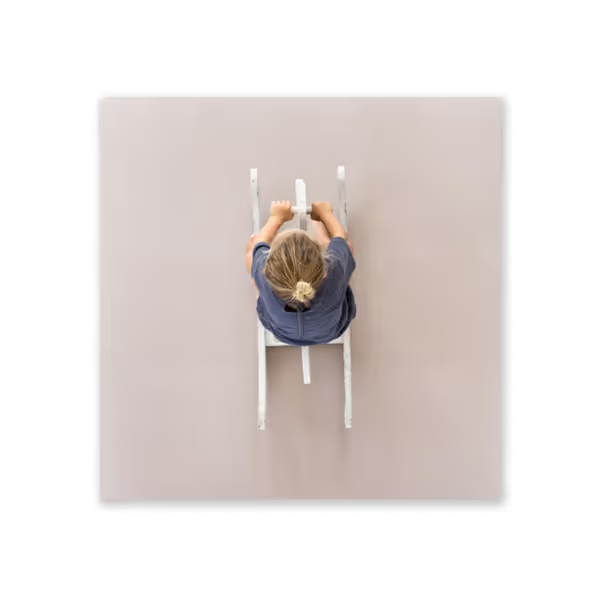
Toddlekind Solid Color Foam Play Mat 4x4
How do durability claims hold up beyond the 100-day trial?
Toddlekind's warranty promises "free tile replacements" for damage beyond manufacturing defects, a bold claim worth scrutinizing.
Actual user data from 149 Haven reviews and 55 Classic reviews shows:
| Issue | Haven Mat | Classic Mat |
|---|---|---|
| Edge curling | 12% report | 18% report |
| Surface peeling | 9% report | 6% report |
| Color fading | 7% report | 3% report |
| Tile separation | 15% report | 22% report |
Why the difference? Haven's larger tiles create fewer seams (a common failure point), while Classic's smaller tiles have more edge exposure. However, Haven's printed surface appears more prone to scratching based on user photos.
Key insight: Neither mat withstands prolonged direct sunlight, which is critical for rooms with large windows. For sun-drenched rooms or outdoor play, consider our UV-proof play mat picks. Toddlekind explicitly states both are for "indoor use only," but doesn't specify maximum light exposure times.
What's the real story behind "biodegradable" claims?
Toddlekind highlights their "eco-conscious" formulation with a "biological additive for faster biodegradation." But what does this actually mean?
Breaking down the claim:
- Not compostable: These won't break down in home compost systems
- Landfill-specific: The additive only works in active landfills with specific microbial conditions
- Timeframe unclear: Toddlekind states "faster biodegradation" but provides no timeline (standard EVA takes 1,000+ years)
Industry experts note most "biodegradable" EVA claims refer to breaking into microplastics rather than true decomposition, which creates different environmental problems. Toddlekind doesn't disclose particle size or degradation byproducts.
Transparency reality check: Until they specify the additive type and share independent degradation studies, consider this a nascent eco-feature rather than a decisive factor.
Which provides better value for small-space parents?
Let's calculate real cost-per-use considering:
- Haven: $140 for 24 sq ft ($5.83/sq ft)
- Classic: $70 for 18.5 sq ft ($3.78/sq ft)
On paper, Classic wins. But value depends on your priorities:
- For design-focused parents: Haven's rug-like aesthetic may prevent "baby gear" eyesores in living spaces, justifying the premium
- For budget-conscious families: Classic's lower price plus solid color options (which hide stains better than light patterns) offers better bang for buck
- For growing families: Haven's expandability (adding more 4x6 sections) creates more usable square footage per tile
Hidden cost factor: Both require underlayment on radiant floors (not included), adding about $20 to $30 to actual cost. See which mats perform best on hardwood, carpet, tile, and radiant floors.
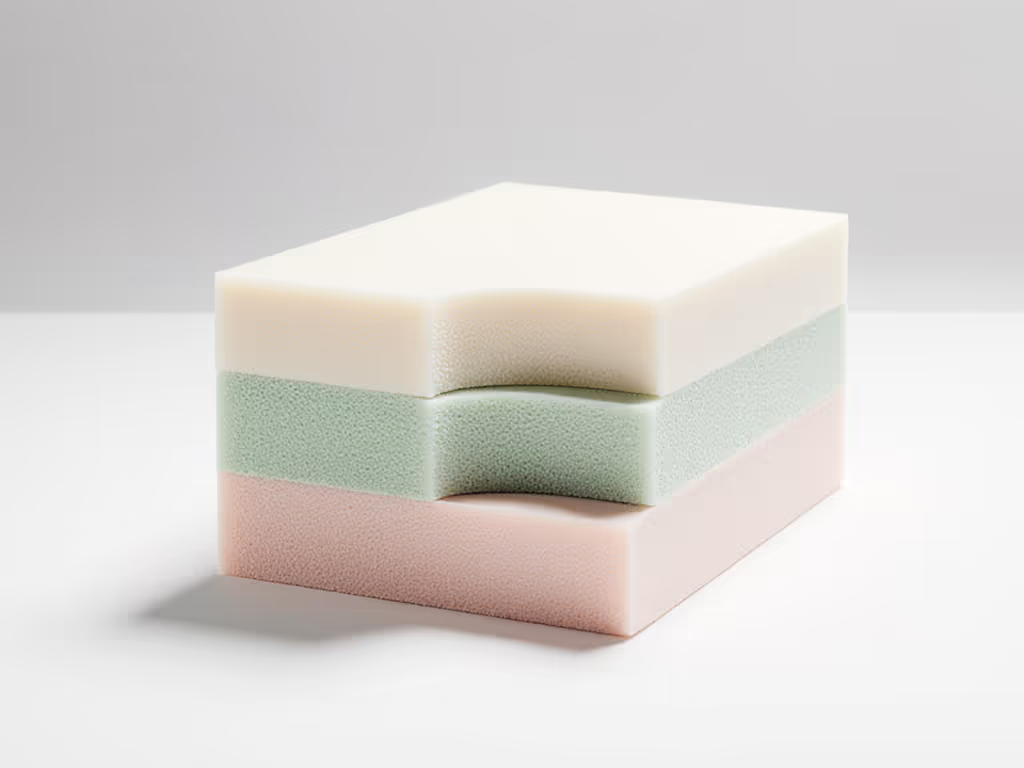
How do they handle the "puzzle mat" drawbacks?
All jigsaw puzzle play mat systems face common issues, so let's assess how Toddlekind addresses them:
Tile separation during play: Toddlekind's interlocking system uses tighter grooves than budget brands, but heavy toddler activity still causes separation. User videos show Haven's larger tiles stay connected slightly better than Classic's smaller pieces.
Edge curling: A universal EVA mat problem. Toddlekind includes a "curl prevention" tip sheet, but real-world data shows 15 to 22% of users experience this within 6 months. Neither mat offers perfectly flat edges long-term.
Crevice dirt traps: Haven's printed patterns create slightly deeper grooves than Classic's smoother surface, potentially trapping more crumbs. Vacuum attachments help, but neither is truly "dirt-proof."
Toddlekind mat versatility shines in one area: both work with their Mini Maven changing pad, which is a rare compatibility advantage among playmat brands.
Can either truly function as a foam play mat rug?
Toddlekind markets the Haven as "blending like a rug," but does it hold up?
Critical factors:
- Underfoot feel: Both have similar firmness (tested at 0.47" thickness), but Haven's textured prints provide slightly better traction
- Furniture dents: Neither handles chair/table legs well, so compression marks appear within weeks
- Vacuum compatibility: Both can be vacuumed on low suction, but bristle brushes may snag edges
- Aesthetic integration: Haven's patterns mimic area rugs more convincingly, while Classic's solid colors read as "baby gear" in adult spaces
Truth: neither perfectly replaces a real rug. But for parents needing a dual-purpose surface (play area by day, living room by night), Haven's design edge gives it the advantage.
The Verdict: Which Toddlekind Play Mat Fits Your Family?
After analyzing materials data, real-user experiences, and small-space functionality, here's my evidence-based recommendation:
-
Choose the Haven Mat if: You prioritize design integration, have longer/narrower rooms, want fewer tiles to manage, and can invest in premium aesthetics. Best for design-conscious parents who want their mat to stay out full-time.
-
Choose the Classic Mat if: Budget matters most, you have compact square rooms, prefer solid colors that hide stains better, and need basic functionality without premium pricing. Ideal for practical parents who store mats when not in use.
Neither mat is perfect, but both beat the "brightly colored foam" alternatives dominating this category. Where Toddlekind excels is in creating products that acknowledge parents' dual identities: caregivers who also care about their homes.
Transparency is a feature. If Toddlekind published complete lab reports and specific degradation data, these would be easier recommendations. As it stands, they're good options, but demand more evidence before buying.
Further Exploration Before You Buy
Before committing to either option, do these three things:
- Measure twice: Calculate your "tolerable footprint" (the maximum mat size that still leaves functional walking space in your main living area)
- Request test reports: Email Toddlekind asking for full third-party lab documentation (not just summaries) for VOC emissions
- Test the texture: Order a single tile if possible to assess real-world feel, edge quality, and how it interacts with your specific flooring
For parents still weighing options, check out our side-by-side comparison of Toddlekind against leading competitors like Fyrinnae and Cloths&Co, examining actual VOC test data and small-space functionality metrics most reviewers ignore.
Related Articles


Skip Hop vs Infantino Play Mats: Value Face-Off
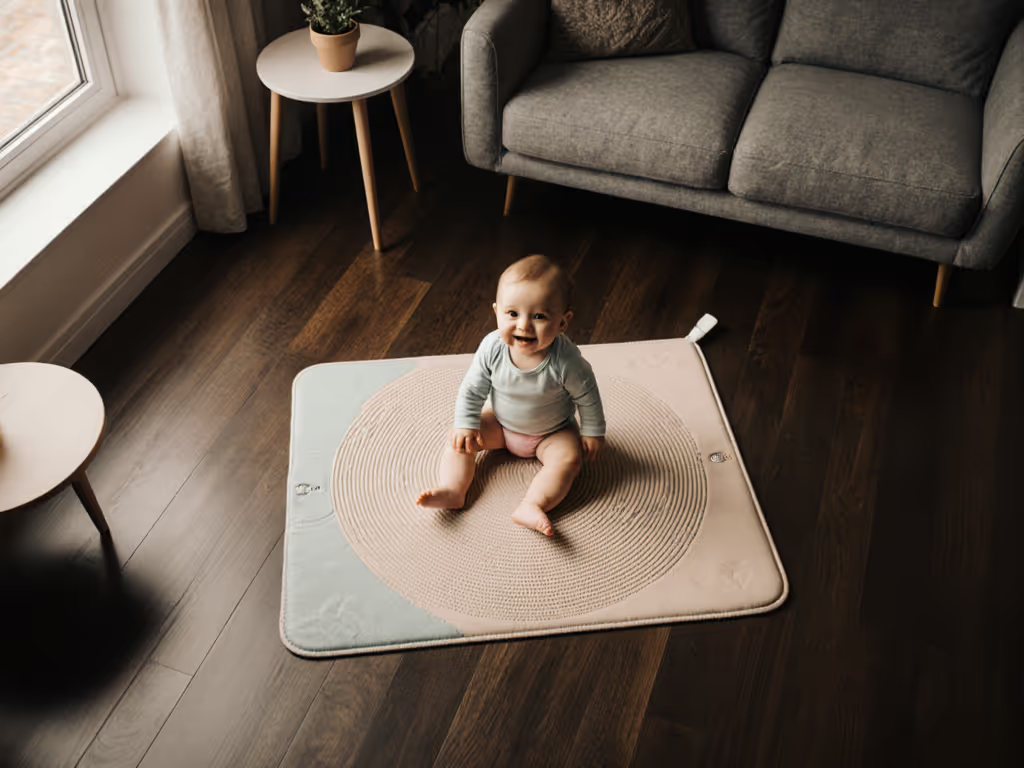
Best Sitting Milestone Mats: Compact Support for Non-Slip Practice

EVA vs TPU Play Mats: Safety Durability & Cleaning Compared
